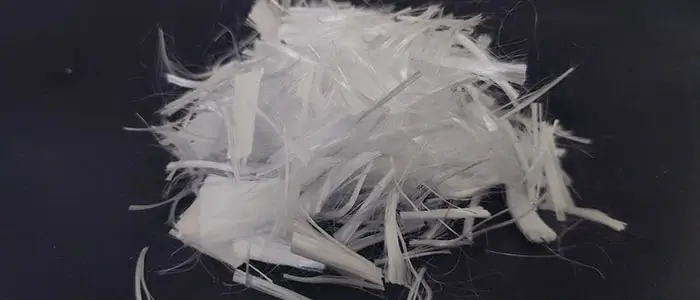1. What is polypropylene fiber?
Polypropylene fiber is a synthetic fiber that is derived from the thermoplastic polymer polypropylene. It is widely used in the construction industry, especially in the production of fiber reinforced concrete. The use of polypropylene fiber in concrete has been gaining popularity due to its many advantages, including improved strength, durability, and crack resistance.
2. Chemical and Physical Properties of Polypropylene Fiber
Polypropylene fiber has excellent chemical and physical properties that make it an ideal reinforcement material for concrete. Some of the chemical and physical properties of polypropylene fiber include:
2.1. Chemical Properties
- Polypropylene fiber is resistant to most acids, alkalis, and organic solvents.
- It has low water absorption, which makes it resistant to degradation caused by moisture and water.
2.2. Physical Properties
- Polypropylene fiber has high tensile strength, which enables it to withstand significant loads.
- It has low thermal conductivity, which makes it an excellent insulation material.
- It has low density, which makes it lightweight and easy to handle.
- It has high flexibility and is easy to process.
3. Technical Specifications
Polypropylene fiber has various technical specifications that determine its suitability for different applications. Some of the critical technical specifications of polypropylene fiber include:
- Length and Diameter: Polypropylene fiber comes in various lengths and diameters, depending on the specific application. The length of the fiber can range from 6 mm to 50 mm, while the diameter can vary from 0.1 mm to 1.0 mm.
- Aspect Ratio: Aspect ratio is the ratio of the fiber length to its diameter. It is an essential parameter that affects the fiber’s mechanical properties, such as tensile strength and stiffness. A high aspect ratio fiber has a higher tensile strength and stiffness than a low aspect ratio fiber.
- Tensile Strength: Tensile strength is the maximum stress that a material can withstand before it breaks. Polypropylene fiber has high tensile strength, which makes it an ideal reinforcement material for concrete.
- Elastic Modulus: Elastic modulus is the ratio of stress to strain in a material. It is a measure of a material’s stiffness. Polypropylene fiber has a low elastic modulus, which means it has high flexibility and can deform significantly before it breaks.
4. Advantages of Using Polypropylene Fiber in Fiber-Reinforced Concrete
Polypropylene fiber has numerous advantages when used in fiber-reinforced concrete. Some of the key advantages include:
- Crack Control: Polypropylene fiber improves the crack resistance of concrete by controlling crack propagation. The fibers act as a reinforcement matrix that bridges the cracks, preventing them from propagating further.
- Durability: Polypropylene fiber enhances the durability of concrete by reducing the effects of shrinkage, temperature changes, and freeze-thaw cycles. It also improves the resistance of concrete to chemical attack, abrasion, and impact.
- Workability: Polypropylene fiber improves the workability of concrete by reducing the bleeding and segregation of the mix. The fibers also enhance the pumpability and finishability of the concrete.
- Cost-Effective: Polypropylene fiber is a cost-effective reinforcement material for concrete. It is less expensive than other fiber reinforcement materials such as glass fiber and steel fiber.
5. What is Fiber Reinforced Concrete?
Fiber reinforced concrete (FRC) is a type of concrete that contains small fibers, such as polypropylene, steel, or glass, that are distributed throughout the concrete matrix. These fibers act as a reinforcement, improving the mechanical properties of the concrete and reducing cracking and other forms of damage.
6. Advantages of Fiber-Reinforced Concrete
Fiber-reinforced concrete (FRC) offers several advantages over traditional concrete. Some of these advantages include:

- Improved Crack Resistance: FRC has improved crack resistance due to the inclusion of fibers, which act as a reinforcement matrix. The fibers bridge the cracks, preventing them from propagating further, improving the durability of the concrete.
- Enhanced Durability: FRC offers enhanced durability due to its improved resistance to shrinkage, temperature changes, and freeze-thaw cycles. It is also more resistant to chemical attack, abrasion, and impact than traditional concrete.
- Increased Flexibility: FRC has increased flexibility due to the inclusion of fibers, which improve its tensile strength and flexural toughness. This property makes it an ideal material for applications that require flexibility and deformability, such as earthquake-resistant structures.
- Reduced Weight: FRC has a lower weight than traditional concrete due to the inclusion of lightweight fibers, which reduce its density. This property makes it an ideal material for applications that require lightweight structures, such as bridges and high-rise buildings.
- Improved Workability: FRC has improved workability due to the inclusion of fibers, which reduce the bleeding and segregation of the mix. This property makes it easier to pump and finish the concrete, reducing the construction time and cost.
Conclusion
Polypropylene fiber is an ideal reinforcement material for fiber-reinforced concrete due to its excellent chemical and physical properties. It offers numerous advantages, including improved crack resistance, enhanced durability, increased flexibility, reduced weight, and improved workability. Fiber-reinforced concrete.
In general, offers several advantages over traditional concrete, making it an ideal material for various construction applications. As the demand for more sustainable and durable construction materials increases, fiber-reinforced concrete, including those reinforced with polypropylene fibers, will become more prevalent in the construction industry.


